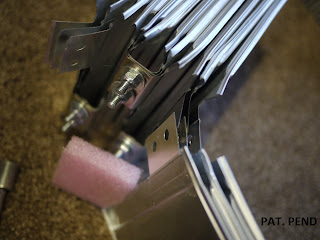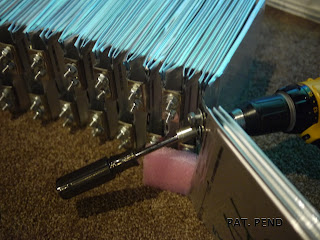Some of the things I like about it so far is the board to board connection is realatively easy and the diagnostic light on the PCB that blinks 6 times to let you know you installed it correctly and that it is working. The boards are pretty small and fit well with 3 cells in parallel. Part of the way through I realized if I installed half of the boards upside down this gave you a bit of extra clearance.

Notice I said upside down, NOT BACKWARDS! This brings me to one of the things I don't like on the system. If you install a cell backwards (i.e. wrong polarity) it is dead. Even for a millisecond. Elithion is very clear about this in their literature but it just seems like a diode to protect the boards would have been a easy fix. So with that in mind, I made sure I had a little installation procedure and followed it. Elithion manual seems very good along with some videos (with no audio for some reason) but for my application I set the pack on it's side and did half where the PCB would hang down to gravity. I was anal and checked every connection with the DMM first then verfied the LED blinked before tightening the nuts down.

I did one full side then flipped the module and did the mid boards in the other direction.

Cut then stripped all of the wires to the right length.

I then made the connections, again one side at a time.

This just helped to get in a pattern and ensure no mistakes.

Just to reiterate what I said about the BMS earlier. If I had cells that I was 100% confident in then I would not have bothered. But being this is an experimental pack design I am far from it (not even close to 3 sigma :). So I decided I needed to montior each cell. I looked into Battery Monitoring Systems and wasn't impressed. I found the Elithion system gave this functionality along with a management system for a very reasonable price and had a lot more features. I must say for someone that is but skeptical of BMS, I am pretty impressed with the system so far. But I am not done yet either... :)
I am also looking if I can use the lithiumlite system just for monitoring and keep my pack bottom balanced.
BTW, Before I purchased I also found all the fabrication was done here in Colorado (Broomfield, CO). I am a big fan of buying locally so this was icing on the cake for what I already thought was the best system and best value.























